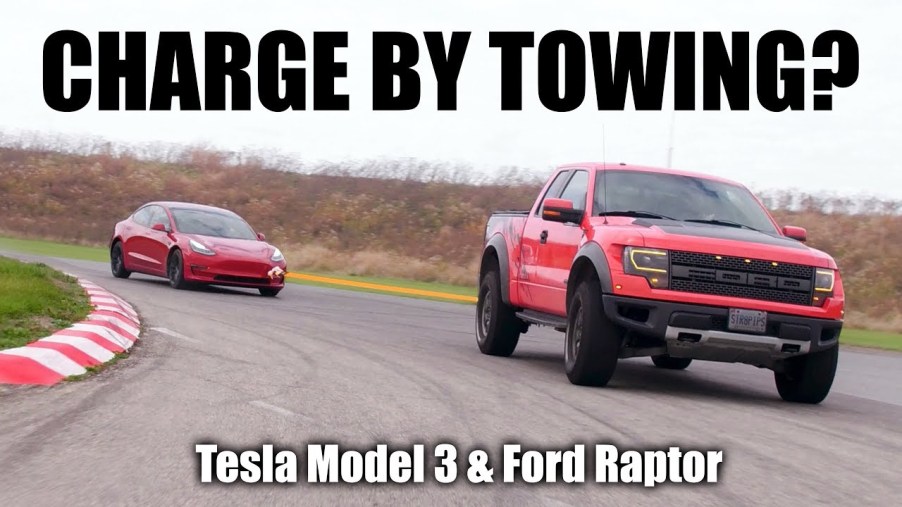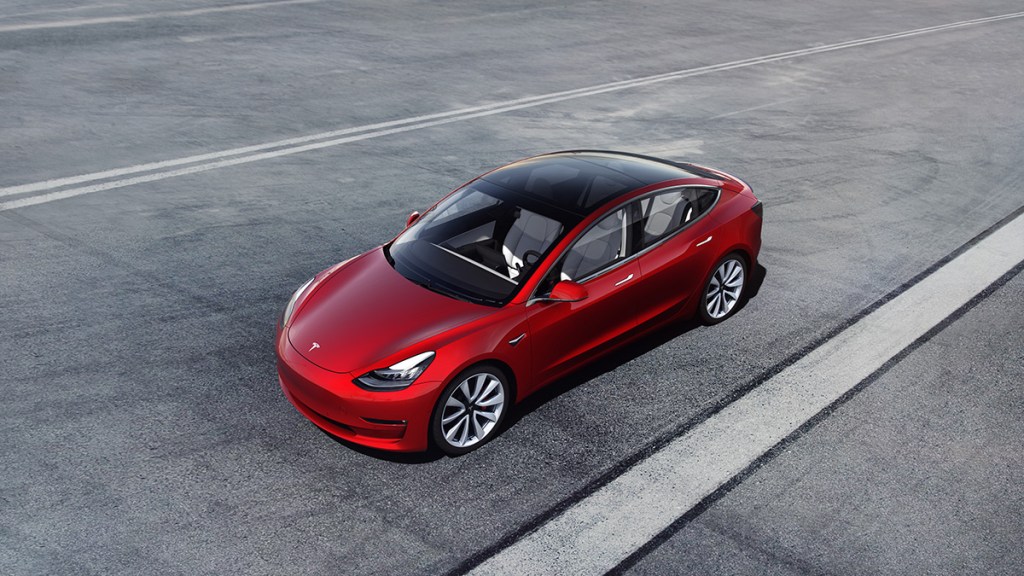
Tesla Need a Recharge? Tow It With a Ford Raptor
As the demand for EVs grows, so is the push for ever-increasing range. Modern engineering and design mean EVs no longer trail far behind their fossil-fuel-powered counterparts. Even in the case of the upcoming electric pickups. Even so, many consumers fear getting stranded without a charge. Luckily, Jason Fenske of Engineering Explained has a potential solution. He partnered up with the guys behind The Straight Pipes YouTube channel to see if a Tesla Model 3 could be recharged by being towed by a Ford SVT F-150 Raptor. And what else their testing revealed maybe a little shocking.
Tesla Raptor Recharge Test Set-Up
To be fair, the team weren’t only interested in seeing if a Tesla could be recharged by towing. They also wanted to compare the efficiency of an EV to an internal-combustion-powered vehicle. But first, they needed to test their original premise.
The setting was Toronto Motorsports Park. The Model 3 was hooked up to the back of the Ford SVT Raptor, set to maximum regenerative braking mode. With the Model 3 in tow, the Raptor completed one lap of the 0.87 course at 18.6 mph. Jason, with The Straight Pipes team as passengers, then zipped around the same course to see how much range the one-lap towing had given the Model 3.

After that, both the Tesla and the Ford completed four laps of the course at a constant speed. This was to check each vehicle’s baseline energy efficiency. Finally, the Model 3 was towed behind the Raptor again, for two laps of the course at 18.6 mph. This time, both the Raptor’s fuel efficiency and the Tesla’s recharge efficiency were recorded.
The goal of all this was to work out how far the Tesla and Ford could go on the equivalent of one gallon of gasoline. But that wasn’t all this test uncovered.
How to Extend One Gallon of Fuel
The towing-recharge test foreshadowed the efficiency test results. Not only could towing the Model 3 recharge it, but Jason managed to complete more than one lap of the course on the energy regained. What makes this more impressive is that one point in the lap, he was going over 90 mph.

To be fair, given its 6.2-liter V8, the F-150 SVT Raptor was never going to be particularly fuel-efficient. All on its own, it delivered 10.7 mpg. The Model 3, as a smaller vehicle, was always going to be more efficient. But its electric powertrain allowed it to deliver the equivalent of 108.5 mpg. Which explains both tow test results.
No surprise, towing makes trucks burn more fuel. In fact, if it only had one gallon of gas, the SVT Raptor would only be able to tow the Tesla 3.4 miles. But in doing so, the Model 3 would have regained enough juice to do an additional 18.1 miles.
Meaning, on one gallon of fuel, an F-150 SVT Raptor could only make it 10.7 miles. But, if you used the Raptor to tow-charge the Telsa, then got in the EV, you could go up to 21.5 miles. Basically, towing a Tesla with a Raptor saves fuel.
How Does This All Work?
The recharge-via-towing is due to the regenerative braking. The basic principle of regen, forward motion = additional source of energy, works as long as the EV’s motors aren’t turning the wheels. As long as the motors are free-wheeling because the car is coasting or it’s being towed, regen braking works.
As for how towing a Model 3 can actually increase the Raptor’s range, that goes back to what separates electric motors from internal combustion ones. For thermodynamic reasons built into the very way ICE motors operate, they will never be as efficient as electric ones. Whether diesel or gasoline, energy always gets lost as heat and/or noise. No, towing the Model 3 doesn’t ‘create’ energy from nothing. As Road & Track explains, towing the Tesla is less efficient than transforming gasoline directly into an electric charge. But, using the Raptor to tow-charge the Model 3 stores part of the gasoline’s energy in a more efficient container.
So, yes, you can recharge a Tesla Model 3 by towing it with a Ford Raptor. And you can save fuel doing it.


